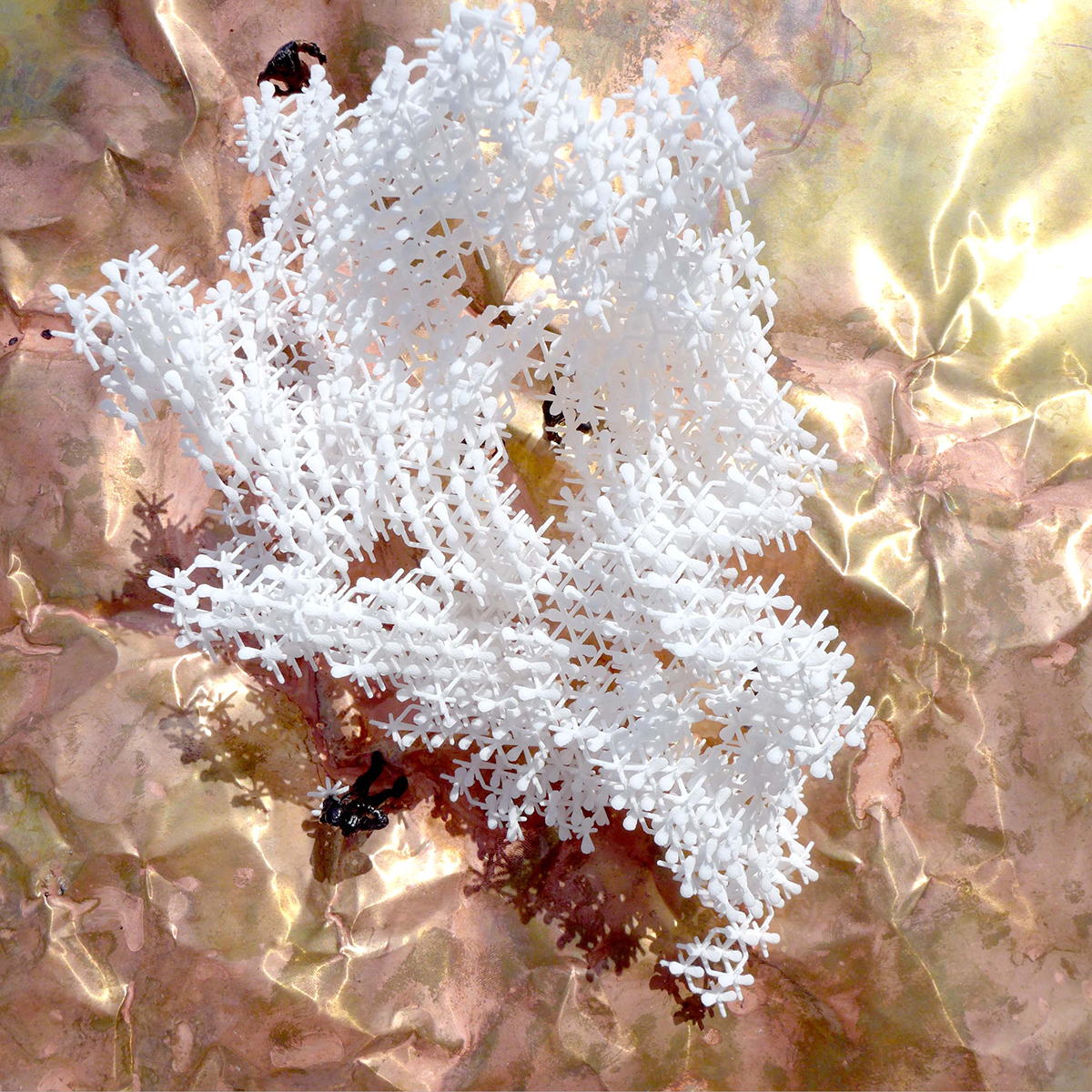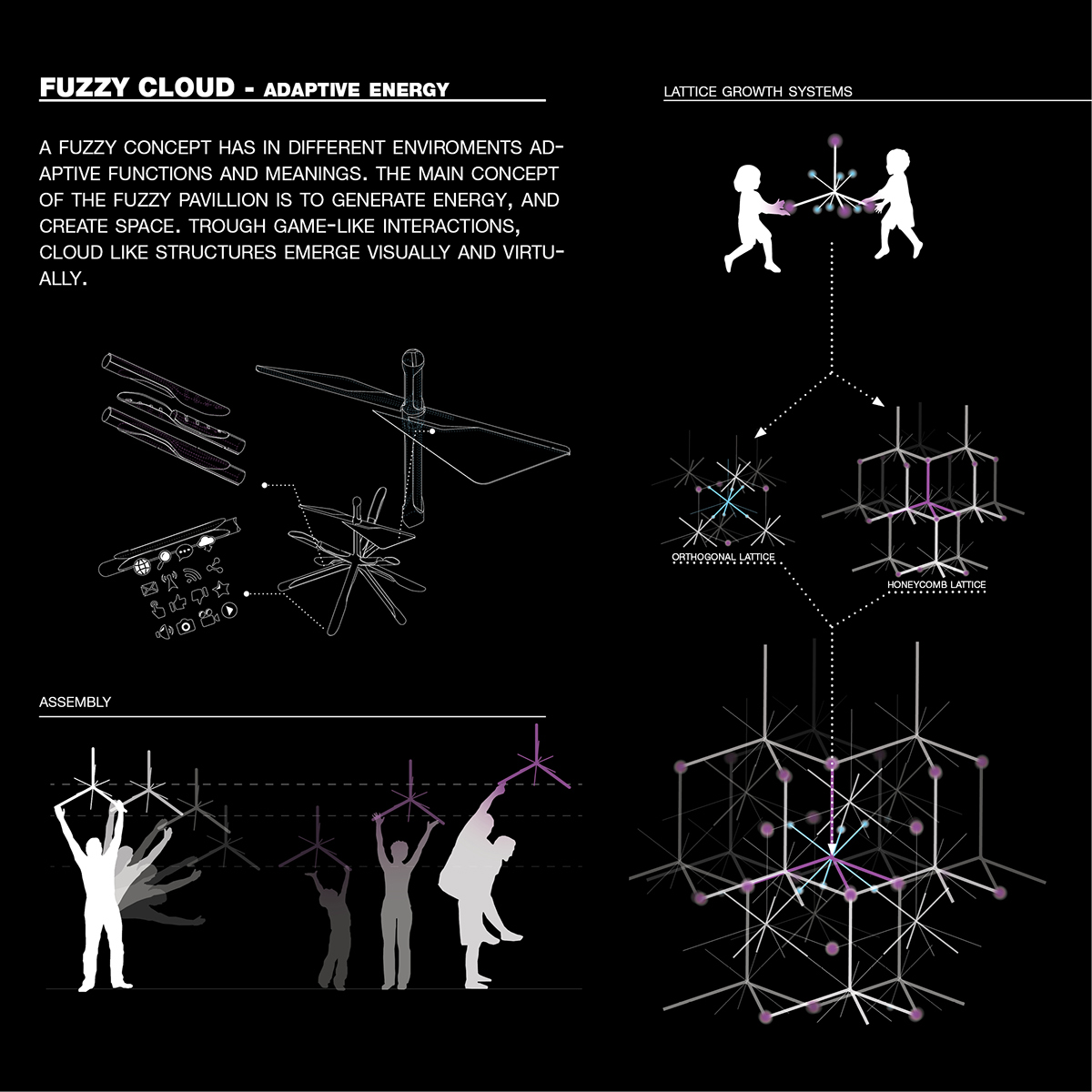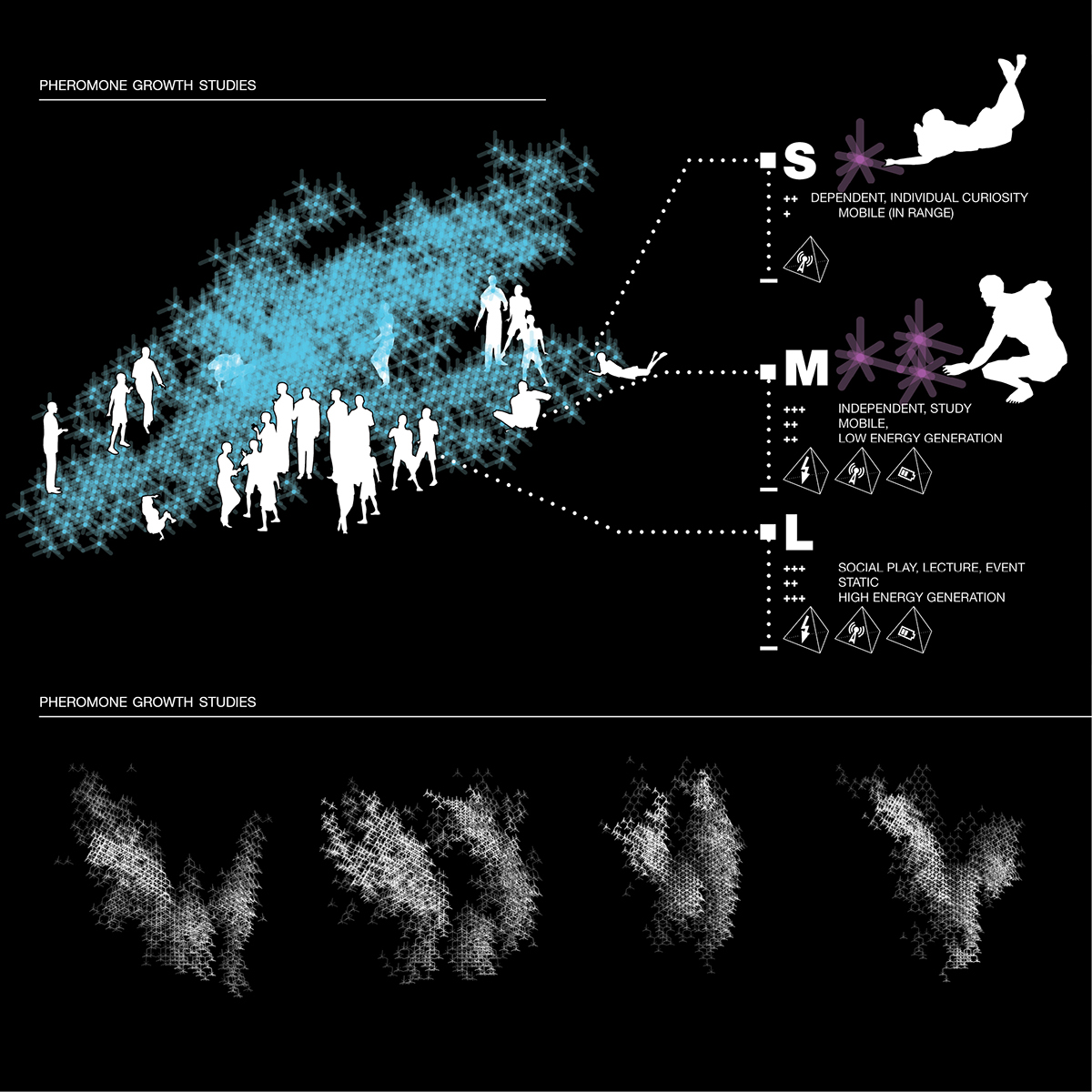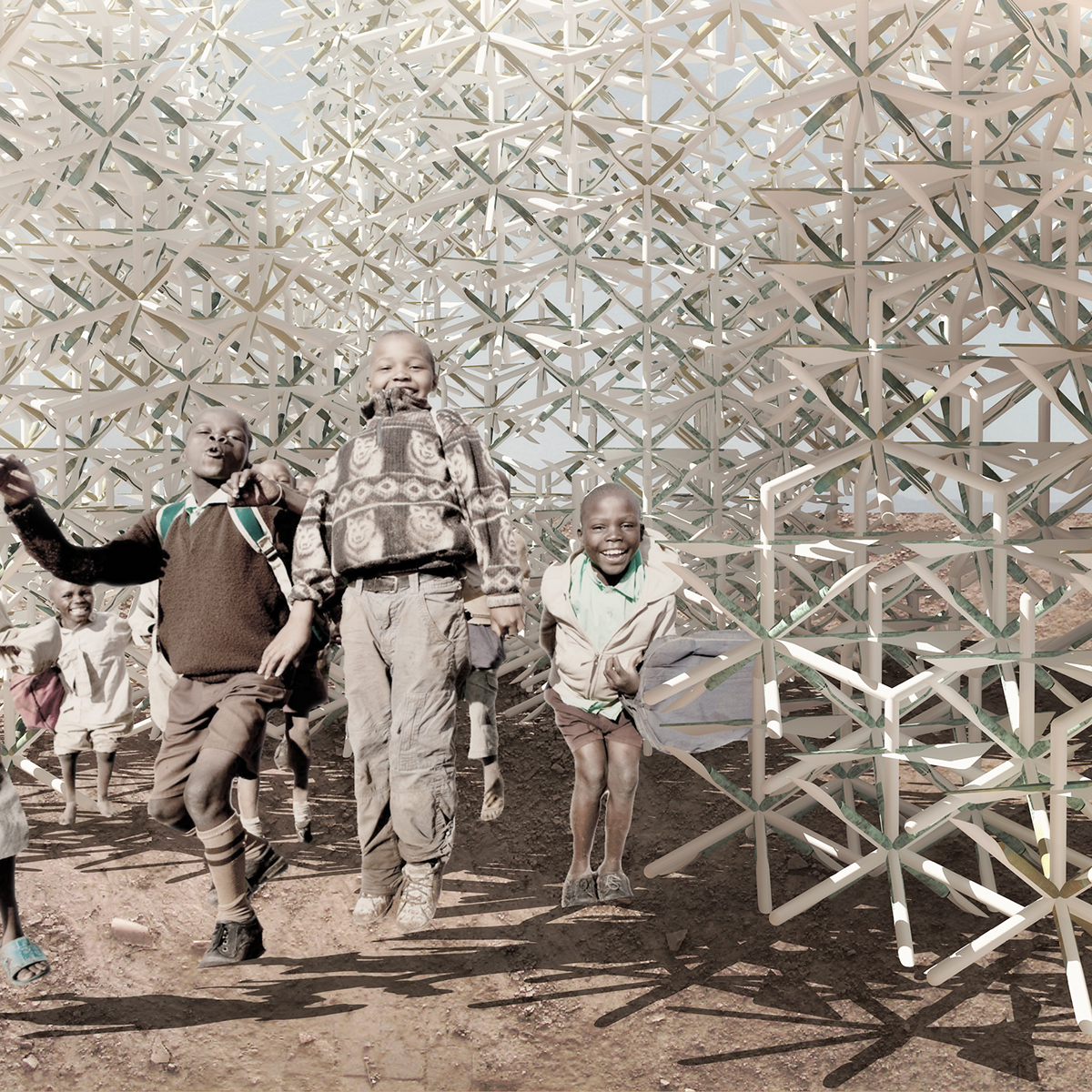
The Fuzzy Cloud Pavilion explores the idea of an adaptive energy generating structure.
In areas where energy access is rare, the use of wind power is a sustainable concept for energy generation. Traditional wind turbines harvest energy efficiently, but do not provide shelter or allow immediate access to the produced energy. The idea behind Fuzzy Cloud was to design a component that, through human interaction, generates a multifunctional adaptive structure. The design of the component is based on the tetrahedron and its packing in a three-dimensional lattice grid. Each component has an horizontal energy-generating propellor that makes it applicable independent of specific wind direction. A script was developed that simulates the human interaction which could emerge within the designed boundaries of the component. Eleven connection points per component give a huge range of possible connections and lead to complex structures. The script simulates with an pheromone growth system the local decision making processes that appear during connection of components. The small size of these components should lead the speedy adaptations of the shape and functionality, creating the possibility of applying different game strategies and social interaction. The generated energy is stored and can be easily accessed for applications like cellphone charging, internet/cloud access, and large events like film screenings.
Through game-like interactions, cloudlike spaces emerge visually and virtually.




Fuzzy Cloud || GRASSER ALEXANDER
University of Innsbruck
Critics: Marjan COLLETTI, Galo MONCAYO, & Allison WEILER.
Critics: Marjan COLLETTI, Galo MONCAYO, & Allison WEILER.
see also Fuzzy Cloud on suckerPunch: http://www.suckerpunchdaily.com/2015/01/15/fuzzy-cloud/


